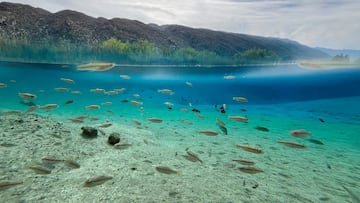When is Earth Day 2024?
Over 42 years ago an event was created in react to a natural disaster that hopes to address one of the most fundamental challenges of this century.

The first Earth Day was celebrated on April 22, 1970, by over 20 million people. It was the culmination of efforts led by a Wisconsin US Senator, with the help of a congressional colleague and a young activist. This year’s celebration will take place on Friday, April 22, 2024. Earth Day is always celebrated on April 22. The roots of Earth Day go further back, with people trying to raise awareness and concern for the environment around us and the living creatures that share it with us, as well as the inextricable links between pollution and public health.
The creation of Earth Day
The idea of Earth Day was first proposed by Senator Gaylord Nelson from Wisconsin, who was inspired to take action after a massive oil spill off the coast of Santa Barbara in 1969. He sought to capitalize on the momentum of student anti-war protests and the growing public awareness of pollution by organizing a “nationwide environmental teach-in” on college campuses.
Senator Nelson enlisted the help of US Representative Pete McCloskey from California to co-chair the event. Together, they brought on board a young activist named Denis Hayes, who coined the name “Earth Day” for the event. They chose April 22 for the event to maximize impact and participation, as it fell between spring break and final exams.
With a team of 85 people, Hayes and his team successfully brought together various groups and promoted the event. The first Earth Day was a huge success, with around 10 percent of the US population, or about 20 million Americans, participating in protests against environmental degradation and the impacts of industrial development.
Earth Day has now grown into an international event. Over 1 billion people participate each year in 193 countries. It is considered the largest secular observance in the world.
The roots of Earth Day started decades ago
Some of the forces that helped propel awareness that the environment was in trouble came from other voices and events prior to 1970. It was common for the oily sludge on rivers to catch fire, but when the Cuyahoga River, which flows into Lake Erie, burned in 1969, people finally realized something needed to be done. The river had burned many times before, and the fire of 1952 caused far more damage but an article in Time magazine helped to spur action.
An earlier watershed moment was in 1962, with the publication of Rachel Carson’s Silent Spring, a world that had been largely oblivious to the degradation of the land, air and water began to take note. The New York Times bestseller sold more than 500,000 copies in 24 countries and greatly increased awareness of the interconnectedness of pollution and well-being of humans and animals alike.
While searching for the true age of the solar system, Clair Patterson, a geochemist, realized that the use of lead in everyday items, especially in leaded gasoline, was contaminating our environment and food chain. He published a paper on his findings in 1965 to try to draw attention to the problem but the industry tried to denigrate his findings. He pushed to have lead removed and starting in 1975 all new model cars were mandated to use unleaded gasoline. By the 1990′s, lead levels within the blood of Americans dropped by up to 80 percent.





